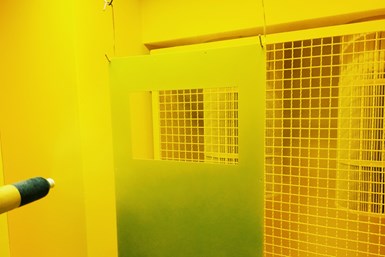Rework and Recoating Powder
Powder coating rework requires more than just recoating the part. Products Finishing columnist and powder coating consultant Rodger Talbert discusses proper steps that should be taken to ensure a quality finish.
#asktheexpert

Photo Credit: Getty Images
Q: We work hard to maintain a high percentage of good parts on the first pass, but we still have some parts with light coating or other minor defects that need to be repaired and/or recoated. We are not always successful at reworking these parts and now we have a second coat which can cause problems with orange peel and other issues. We need to know how to rework scratches or other surface imperfections in a powder coated finish and then successfully apply a second coat. Can you describe the process so that I can pass along a process for my operators for a reliable rework procedure?
A: There are several variables to this (the specific powder, nature of the defect, coating thickness, etc.), so I will provide a simple process that will cover the vast majority of rework.
Featured Content
- Remove all loose material by wire brush, sanding or similar mechanical abrasion
- Get a smooth surface in the rough areas using sandpaper or a grinder
- Blow off or wash off all remaining dust or particles
- Make sure the part is dry and free of all debris prior to coating
You will need to recoat the entire part with the powder spray so that none of the original coating shows through. If you do not get a complete and even second coat, you will have a dry spray look and uneven gloss. For optimum coverage, there are a few minor adjustments you should make to the guns. This is fairly simple with a manual gun. If you use automatic guns, it is best to batch up the rework and set a recipe for the adjustments.
- Reduce the amperage to around 20 to 40 micro-amps
- Increase the flow rate of the powder by about 10%
- Increase the gun-to-target distance about 1" to 2" farther than normal
- Maintain a constant gun-to-target distance
- Recoat the entire “A” surface
Cure the part for the normal cure cycle. Get your operators together for a brief training session on the proper technique to make sure they understand and can execute it. Practice on some scrap parts to perfect the technique.
One other thing that is good to know is that some powder materials are not great for inner-coat adhesion. They may need to be lightly sanded to achieve a good bond. You may need to do some testing to ensure the second coat will adhere.
About the Author

Rodger Talbert
Rodger Talbert began his career in coatings in 1976 when he went to work for a small company that does metal fabrication and custom coating. He worked there for 10 years, rising to the position of VP of Sales and Marketing. He left there to work as a sales engineer for a larger company that designs and builds coating systems, and worked there for seven years. In 1993, Talbert started his own business as a consultant. He ran his own corporation for 15 years before joining The Powder Coating Institute as technical director in 2009. He served as the PCI Executive Director until June 2012.
RELATED CONTENT
-
Understanding Paint Atomization
BASF coatings development expert Tim December explains how paint atomization works for both pneumatic spray applicators and high-speed rotary bell applicators.
-
Blistering Defects and How to Avoid Them
Verney Denerville of TIGER Drylac discusses recommendations for avoiding or mitigating blistering defects in powder coatings.
-
TGIC Powder Coatings vs. Non-TGIC Powder Coatings
As raw materials become increasingly scarce, powder coating consultant Rodger Talbert offers insights into using non-TGIC products.



















